Abstract
A study was carried out to determine whether variations in the respiration rate during physical exercise could be used as a physiological variable in controlling the rate of an implanted pacemaker. The relation between respiration rate and heart rate was significantly correlated in 73 patients (19 with normal lung function, four with restrictive pulmonary disease, and 50 with obstructive airways disease) during repeated calibrated ergometric tests; no significant differences were found between the subgroups. An external computerised programmable system with algorithm control activated by a radio frequency system was used to vary the cardiac stimulation rate in relation to respiration rate in 11 patients implanted with ventricular inhibited pacemakers. In addition, a prototype programmable pacemaker dependent on respiration rate was implanted in two patients. Maximum values of oxygen uptake, minute ventilation, and work time were increased during the exercise stress tests when the variable cardiac pacing rate was used. Thus respiration rate appears to be a valid and stable physiological variable for controlling the cardiac stimulation rate in order to improve cardiac output in patients dependent on pacemakers.
Full text
PDF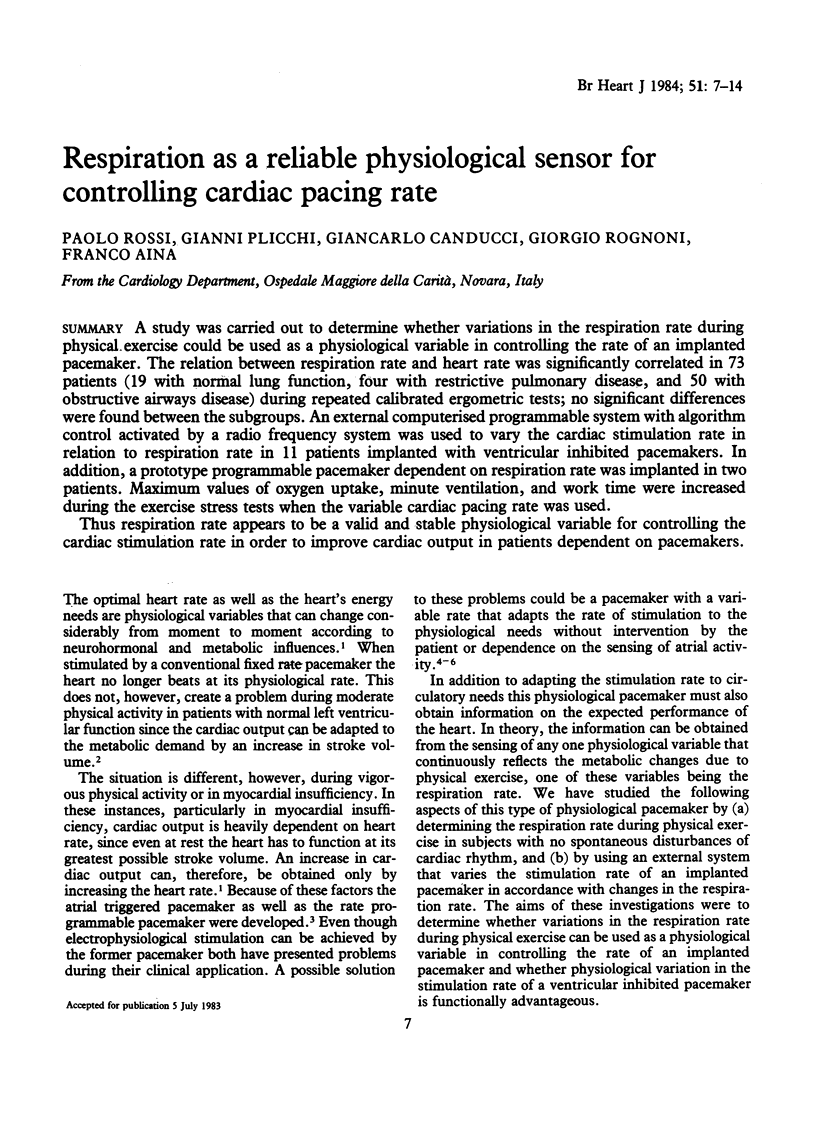
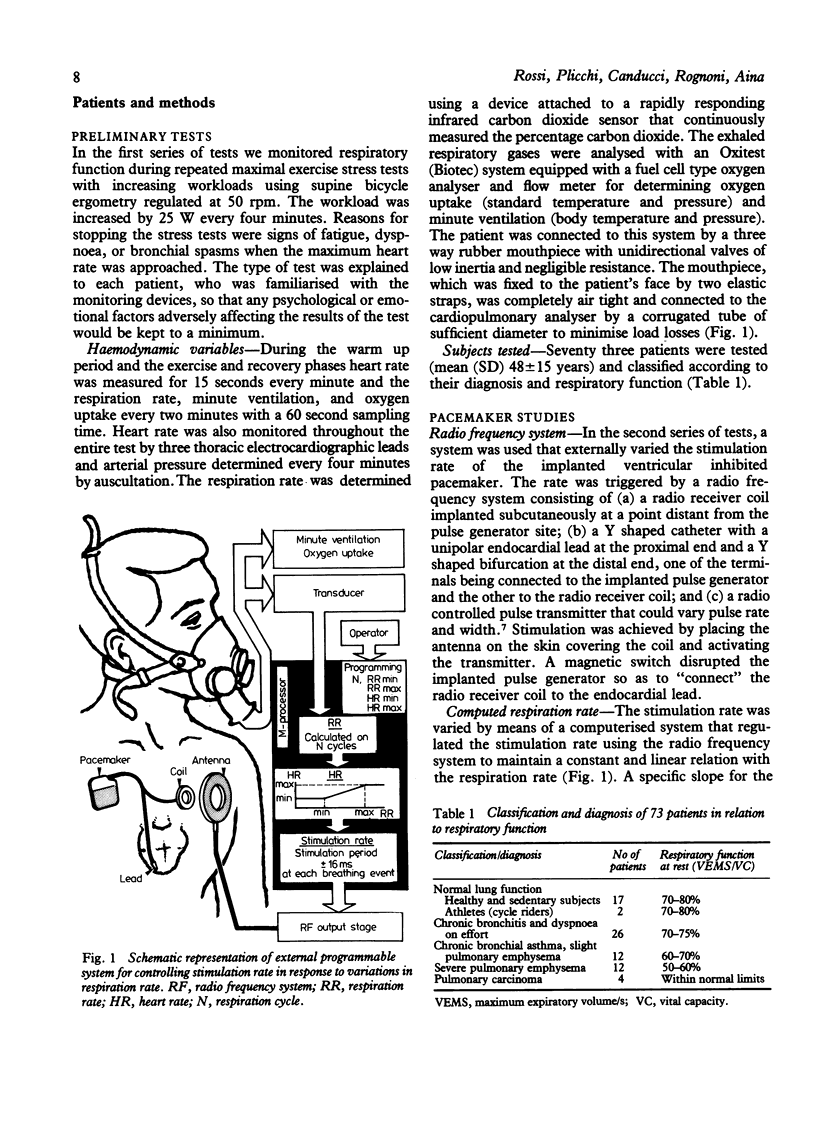
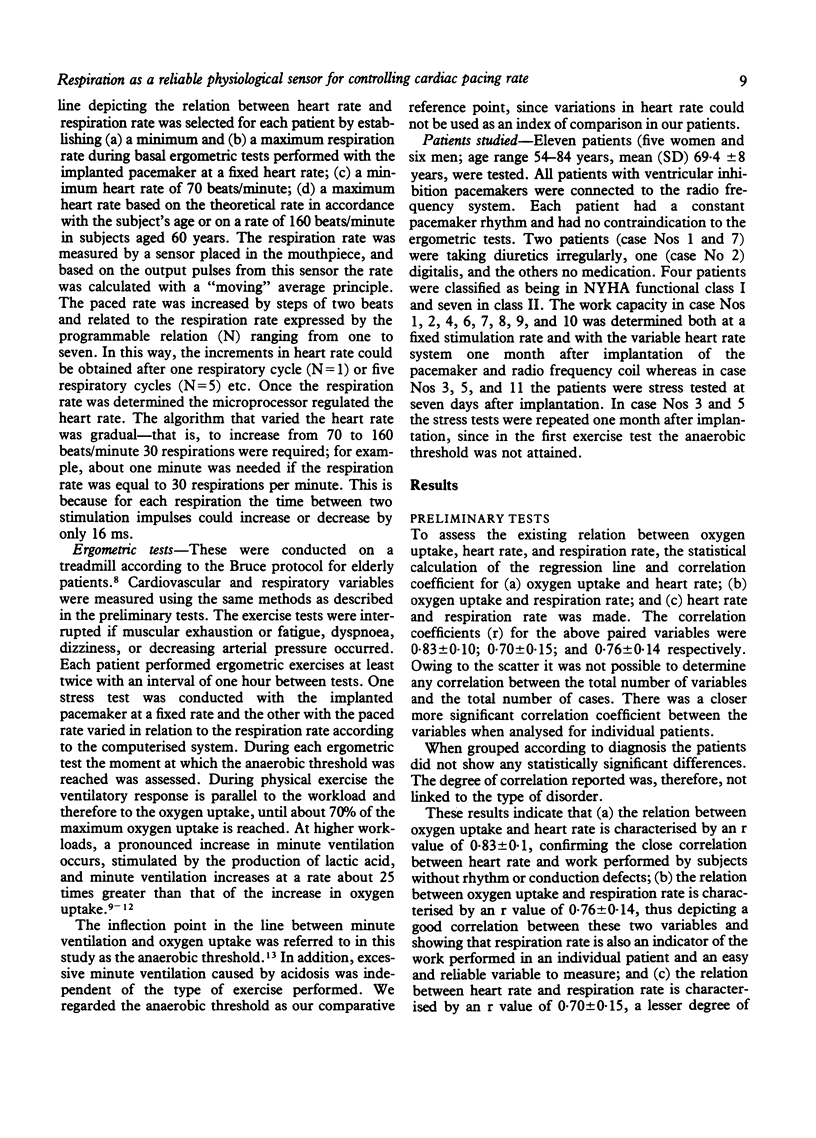
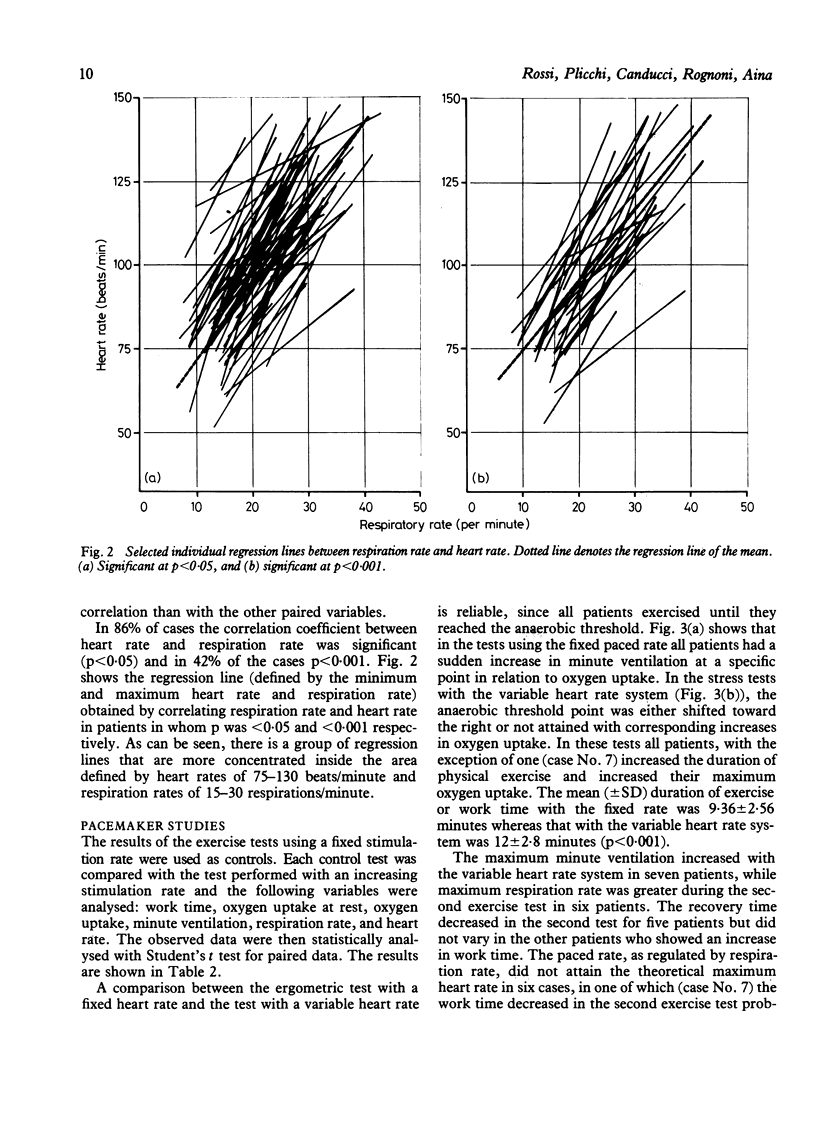
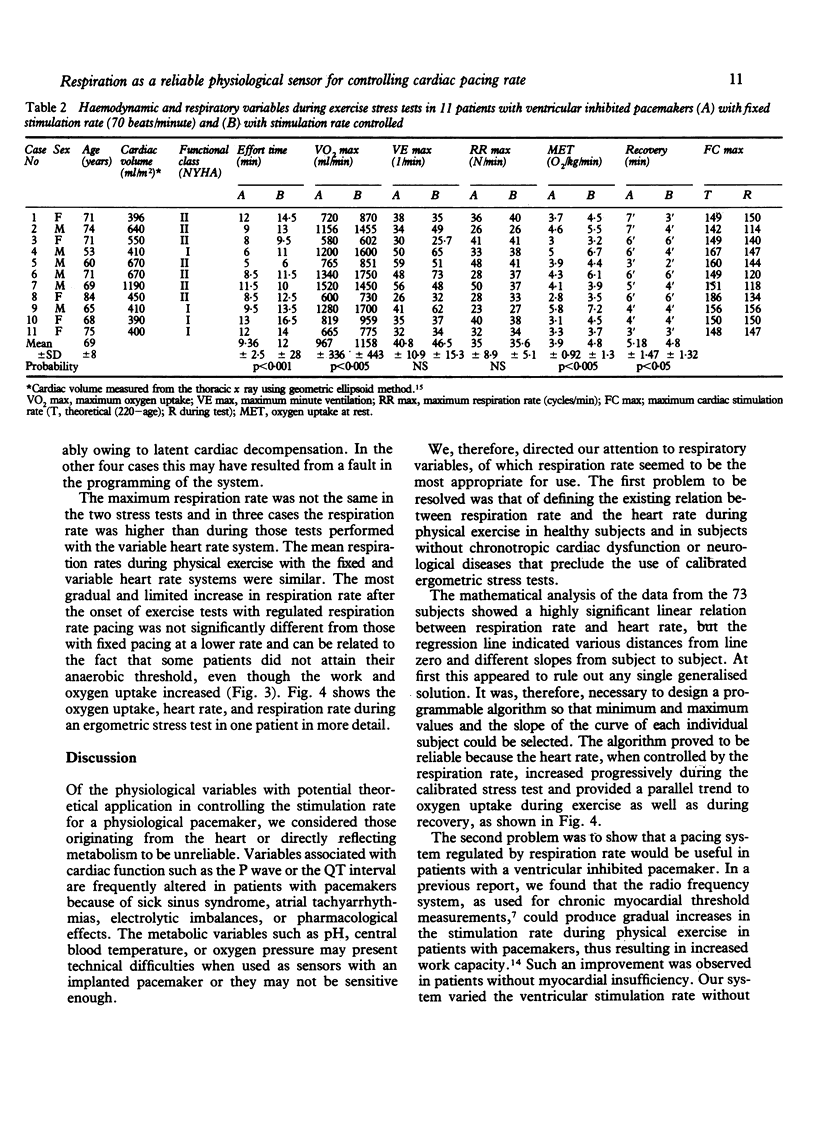
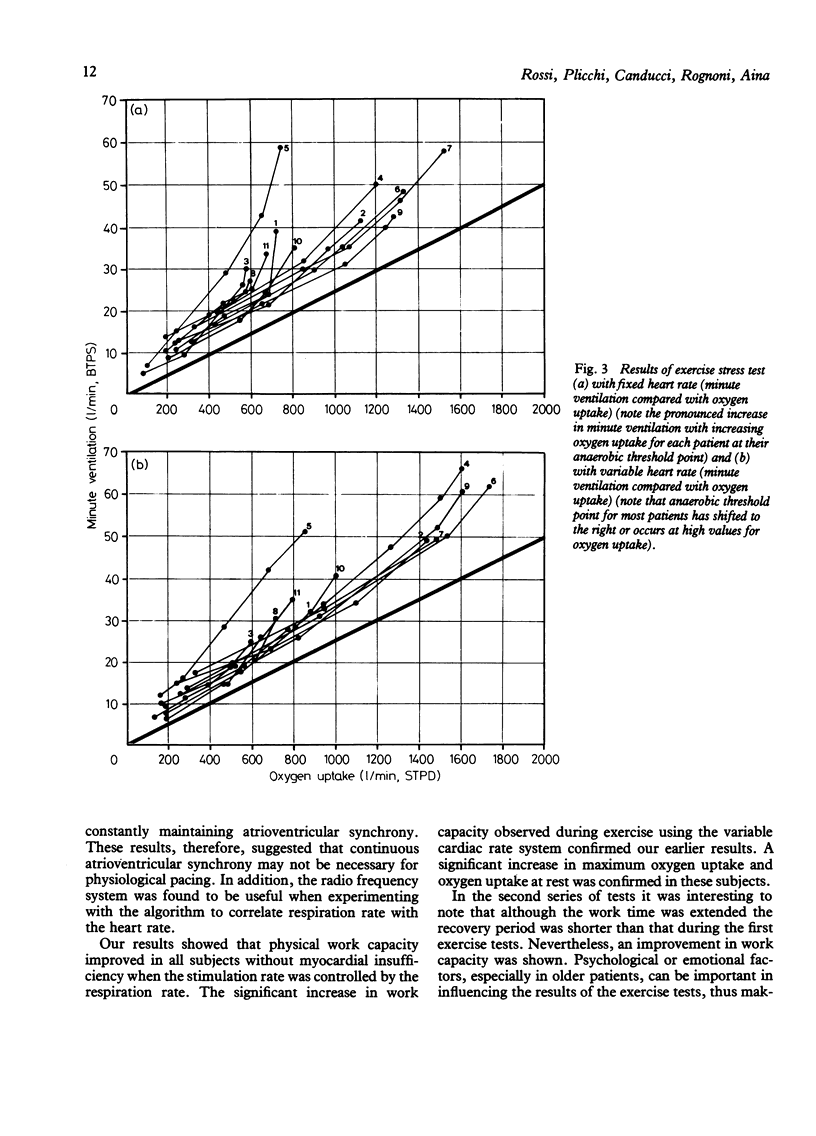
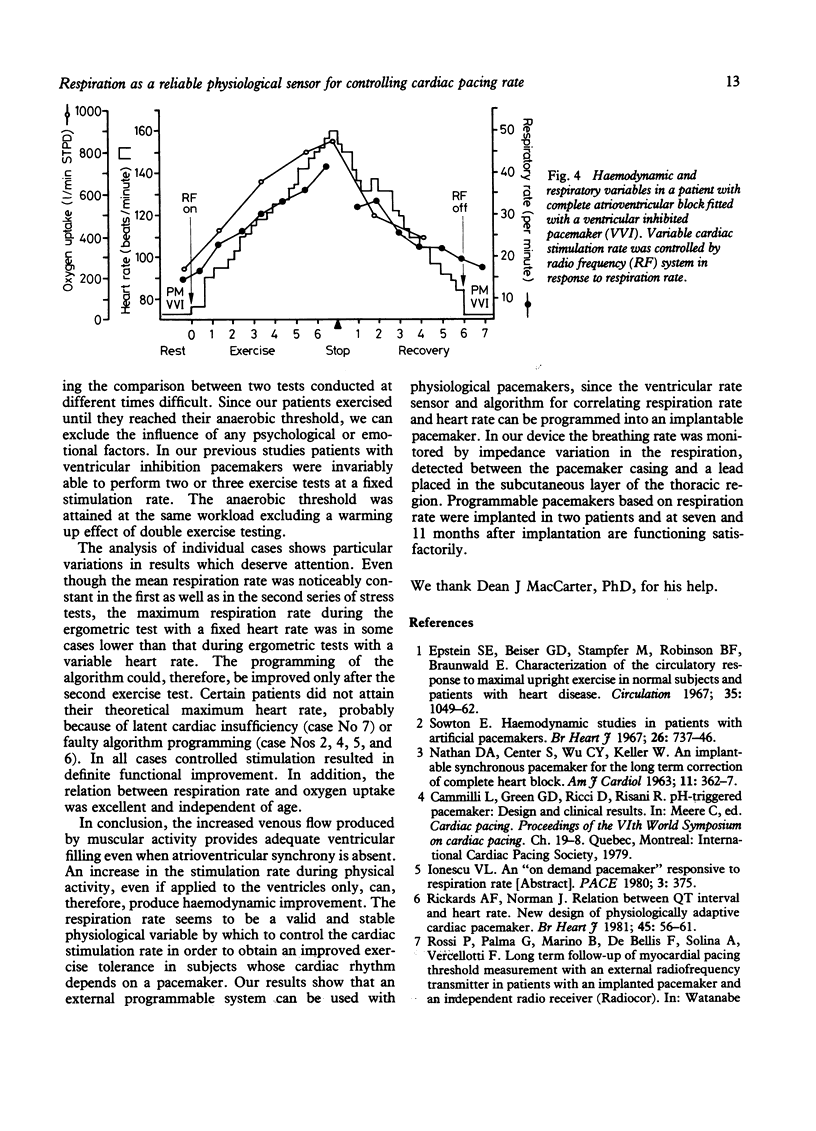
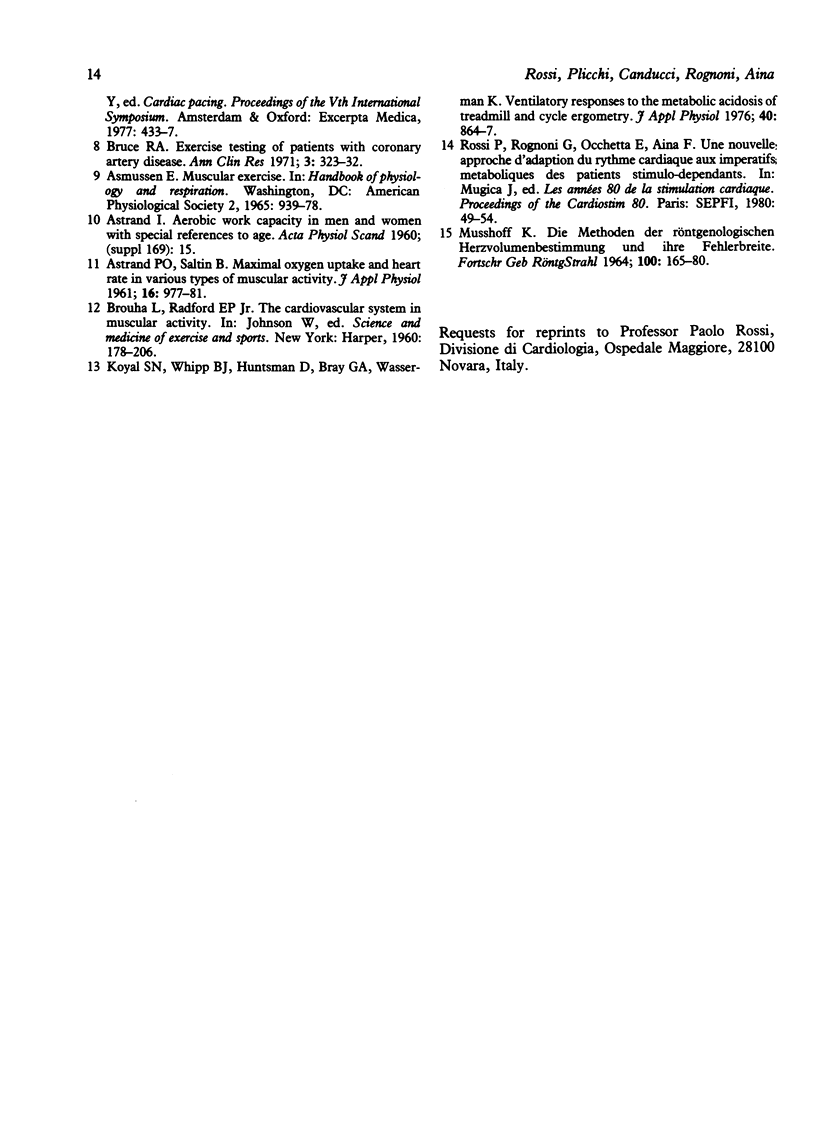
Selected References
These references are in PubMed. This may not be the complete list of references from this article.
- ASTRAND P. O., SALTIN B. Maximal oxygen uptake and heart rate in various types of muscular activity. J Appl Physiol. 1961 Nov;16:977–981. doi: 10.1152/jappl.1961.16.6.977. [DOI] [PubMed] [Google Scholar]
- Bruce R. A. Exercise testing of patients with coronary heart disease. Principles and normal standards for evaluation. Ann Clin Res. 1971 Dec;3(6):323–332. [PubMed] [Google Scholar]
- Epstein S. E., Beiser G. D., Stampfer M., Robinson B. F., Braunwald E. Characterization of the circulatory response to maximal upright exercise in normal subjects and patients with heart disease. Circulation. 1967 Jun;35(6):1049–1062. doi: 10.1161/01.cir.35.6.1049. [DOI] [PubMed] [Google Scholar]
- MUSSHOFF K. DIE METHODEN DER ROENTGENOLOGISCHEN HERZVOLUMENBESTIMMUNG UND IHRE FEHLERBREITE. Fortschr Geb Rontgenstr Nuklearmed. 1964 Feb;100:165–180. [PubMed] [Google Scholar]
- NATHAN D. A., CENTER S., WU C. Y., KELLER W. An implantable synchronous pacemaker for the long term correction of complete heart block. Am J Cardiol. 1963 Mar;11:362–367. doi: 10.1016/0002-9149(63)90130-9. [DOI] [PubMed] [Google Scholar]
- Rickards A. F., Norman J. Relation between QT interval and heart rate. New design of physiologically adaptive cardiac pacemaker. Br Heart J. 1981 Jan;45(1):56–61. doi: 10.1136/hrt.45.1.56. [DOI] [PMC free article] [PubMed] [Google Scholar]
- SOWTON E. HAEMODYNAMIC STUDIES IN PATIENTS WITH ARTIFICIAL PACEMAKERS. Br Heart J. 1964 Nov;26:737–746. doi: 10.1136/hrt.26.6.737. [DOI] [PMC free article] [PubMed] [Google Scholar]


